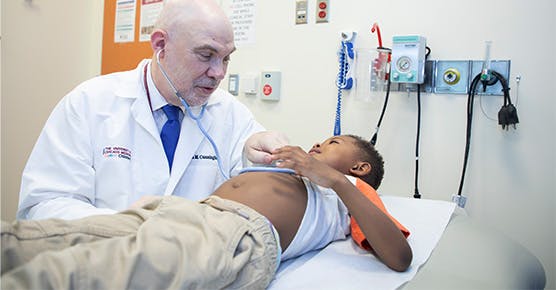Treating Neuroblastoma in Children
While the goal of all treatment is to remove or destroy the tumor, the specific approach will depend on the course of each patient's disease, as well as his or her age and overall health.
Low- and Intermediate-Risk Neuroblastoma
Surgery often is the first line of treatment for children with localized, low-risk neuroblastoma. Occasionally, the tumor goes away on its own, without treatment. Patients with intermediate-risk neuroblastoma often undergo surgery and chemotherapy. Our physicians will determine the appropriate chemotherapy regimen based on the biologic features of the tumor. Low- and intermediate-risk neuroblastoma are both highly curable forms of the disease.
High-Risk Neuroblastoma
Children with more aggressive neuroblastoma require intensive treatment that may include:
- Chemotherapy
- Surgery
- Stem cell transplantation
- Radiation therapy
- Immunotherapy
Some patients with high-risk neuroblastoma are not cured with standard treatment approaches. It is important to seek medical care from physicians with expertise and extensive cancer-focused resources. Treatment options for patients who have neuroblastoma that does not respond to standard treatment or that recurs include:
- Clinical trials of new drug therapies
- Immunotherapy (also called biologic therapy)
- Stem cell transplantation
- I131-MIBG therapy
Learn more: Comer Children's pediatric cancer experts wrote about neuroblastoma for the American Society of Clinical Oncology and the Encyclopedia Britannica.



